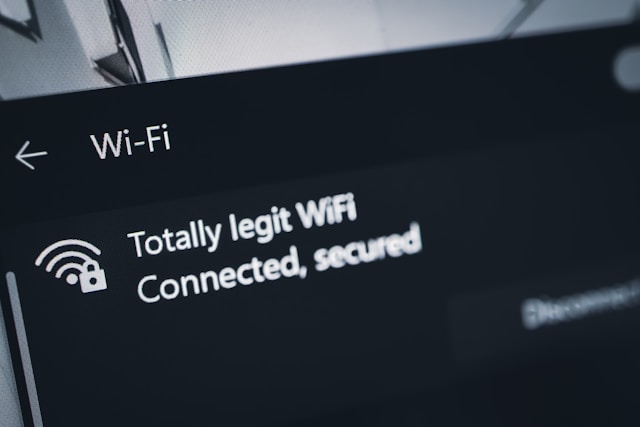This Appendix provides detailed advice on records management relating to specific types of records. These are presented in alphabetical order.
Audio and visual records
Audio and visual records can take many forms such as using a dictaphone (digital or analogue) to record a session or conducting a care interaction using videoconferencing technologies.
The following needs considering when interactions are captured in this way:
- Appropriateness: Organisations should decide when it is appropriate to use audio or visual methods for the provision of care. This should be documented in organisational policies and understood by the relevant care professionals.
- Retention: If the recording is going to be kept elsewhere (for example, as part of the care record) then there is no reason to keep the original recording provided the version in the main record is the same as the original or there is a summary into words which is accurate and adequate for its purpose. If the recording is the only version or instance of the interaction, then it must be kept for the relevant retention period outlined in this Code.
- Digital continuity: You must consider the medium on which the recording is made and ensure that it is available throughout its retention period (for example, if the system or file format is becoming obsolete, then you will need to migrate it to a newer platform or format to ensure availability). If it is a digital recording and you are looking to store it in the care record, ensure the transfer process captures the authenticity of the recording kept.
- Storage: Ensure your recordings are stored on systems you control or are provided to you under contract. If stored with the product provider, you must give them (as controller) clear instructions on the storage and retention of those images (for example, delete one month after the date of the recording because it has been summarised into the main care record, or retain for 8 years from consultation with the service user, then destroy). Providers acting under contract to a controller are obliged to carry out their written instruction.
- Transparency: You must be transparent with the people who use your services regarding the use of audio and visual technology, and associated records, so that they have a reasonable understanding of how they will be used, why, and what will happen with the recording after the interaction. For example, it would be unfair to tell participants that the recordings are deleted if they are not.
Complaints records
Where a person complains about a service, it is necessary to keep a separate file relating to the complaint and subsequent investigation. Detailed complaint information should never be recorded in the care record. A complaint may be unfounded or involve third parties and the inclusion of that information in the care record will mean that the information will be preserved for the life of the record and could cause detrimental prejudice to the relationship between the cared for person and the Care Team. In some cases, it may be appropriate to share details of the complaint with the care professional involved in providing individual care in order to make improvements in care delivery. However, there may also be times where the complaint is about an individual but not care related and it might not be appropriate to share details of the complaint with that person, in case further action is required. The Complaints Team should review each complaint on a case-by-case basis.
Where multiple teams are involved in the complaint handling, all the associated records must be brought together to form a single record. This will prevent the situation where one part of the organisation does not know what the other has done. A complaint cannot be fully investigated if the investigation is based on incomplete information.
Care organisations should have a local policy to follow with regards to complaints, covering how information will be used once any complaint is raised, and after the complaint has been investigated, regardless of outcome. The ICO has also issued guidance on complaints files and who can have access to them, which will drive what must be stored in them.
Contract change records
Once a contract ends, any service provider still has a liability for the work they have done and, as a general rule, at any change of contract the records must be retained until the time period for liability has expired.
When a service is taken over by a new provider, the records of the service (current and discharged cases) all transfer to the new provider (unless directed otherwise by the commissioner of the service). This is to ensure that the records for the service remain complete and enable service users to obtain their record if they so request it. It also makes the records easier to locate if they are required for other purposes. This will also stop the fragmentation of the archive records for the service and make it much easier to retrieve records.
It is vital to highlight the importance of actively managing records, which are stored in offsite storage (refer to section three of The Code for further information on offsite storage).
Evidence required for courts
In UK Law, the civil procedure rules allow evidence to be prepared for court and, as part of this, the parties in litigation can agree what documents they will disclose to the other party and, if required, dispute authenticity. The disclosure of digital records is referred to as E-Disclosure or E-Discovery. The relevant part for disclosure and admissibility of evidence is given in the Ministry of Justice’s Civil Procedure Rules – Part 3. If records are arranged in an organised filing system, such as a business classification scheme, or all the relevant information is placed on the client file, providing records as evidence will be much easier. Further advice on electronic records and evidential weighting can be found in BIP10008: Evidential Weight and Admissibility of Electronic Information.
Occupational health (OH) records
Occupational health records are not part of the main staff record and for reasons of confidentiality they are held separately. It is permitted for reports or summaries to be held in the main staff record where these have been requested by the employer and agreed by the staff member. When occupational health records are outsourced, the organisation must ensure that:
- staff are aware of the outsourcing and how their information may be used for OH purposes
- the contractor can comply as necessary with data protection and confidentiality requirements
- there is a contract in place with the outsourced provider that has legally binding clauses in relation to data protection and confidentiality
- the contractor can retain records for the necessary period after the termination of contract for purposes of adequately recording any work-based health issues and is able to present them to the organisation if required.
Pandemic records
Health and care organisations will create records as part of a response to a global pandemic. Pandemic events are rare but will nevertheless create records that need to be managed.
Both patient and service user records will be created that detail the care given to people affected by the pandemic. Corporate records will also be created which record business decisions, policies and processes that were taken in response to a pandemic.
These records should be managed in accordance with the retention schedules set out in this Code. Organisations should be mindful of the COVID-19 public Inquiry. The NHS England Transformation Directorate has produced guidance and FAQs on the COVID-19 public Inquiry.
If organisations have created records specifically in response to a pandemic, these should not be destroyed when they have reached their minimum retention period, unless the public inquiry has ended, or the Inquiry has provided guidance on what type of records it will be interested in. Any guidance or advice issued by The National Archives or your local Place of Deposit (PoD) in relation to the preservation of pandemic records should be followed.
Staff records
Staff records should hold sufficient information about a staff member for decisions to be made about employment matters. The core of any staff file will be the information collected through the recruitment process and this will include the job advert, application form, evidence of the right to work in the UK, identity checks and any correspondence relating to acceptance of the contract. The central HR file must be the repository for this information, regardless of the media of the record.
It is common practice in some care organisations for the line manager to hold a truncated record, which contains portions of an employee’s employment history. This can introduce risk to personal information (as it is duplicated), but also potentially expedient to do so. Organisations considering whether to use, or discontinue using, local HR files, should complete a risk assessment.
Information kept in truncated staff files should be duplicates of the original held in the central HR file. If local managers are given originals as evidence (such as a staff member bringing in a certificate of competence) they should take a copy for local use and the original should be kept with the main HR file. It is important that there is a single, complete employment record held centrally for reference and probity.
Some organisations operate a weeding system, whereby staff files are culled of individual record types that are now time expired (such as timesheets). Others have just kept the whole file as is and archived it away until 75th birthday. It is not recommended to change your system from one to the other because:
- the effort involved would be disproportionate to the end result
- if you begin to weed files, you would need to do this retrospectively to all files, to avoid having two types of central HR file
- you cannot reverse the weeding process – if you decide to keep full records, it is impossible to remake historically weeded files complete again.
Both systems are acceptable, regardless of media. It is noted that organisations may have a hybrid system of paper historical staff files and digital current staff files. If possible, organisations should consider moving all their files into one format to create consistency.
Where an organisation decides to use a summary, it must contain as a minimum:
- a summary of the employment history with dates
- pension information including eligibility
- any work-related injury
- any exposure to asbestos, radiation and other chemicals which may cause illness in later life
- professional training history and professional qualifications related to the delivery of care
- list of buildings where the member of staff worked, and the dates worked in each location.
Disciplinary case files should be held in a separate file so they can be expired at the appropriate time and do not clutter up the main file. That does not mean that there should be no record that the disciplinary process has been engaged in the main record, as it may be pertinent to have an indication to the disciplinary case, but the full details and file must be kept separately from the main file.
With regards to staff training records, it can be difficult to categorise them to determine retention requirements but keeping all the records for the same length of time is also hard to justify. It is recommended that:
- clinical training records are retained until 75th birthday or six years after the staff member leaves, whichever is the longer
- statutory and mandatory training records are kept for ten years after training is completed
- other training records are kept for six years after the training is completed.
The Chartered Institute for Personnel and Development, and the ICO have provided further information and advice on the retention of HR records.

